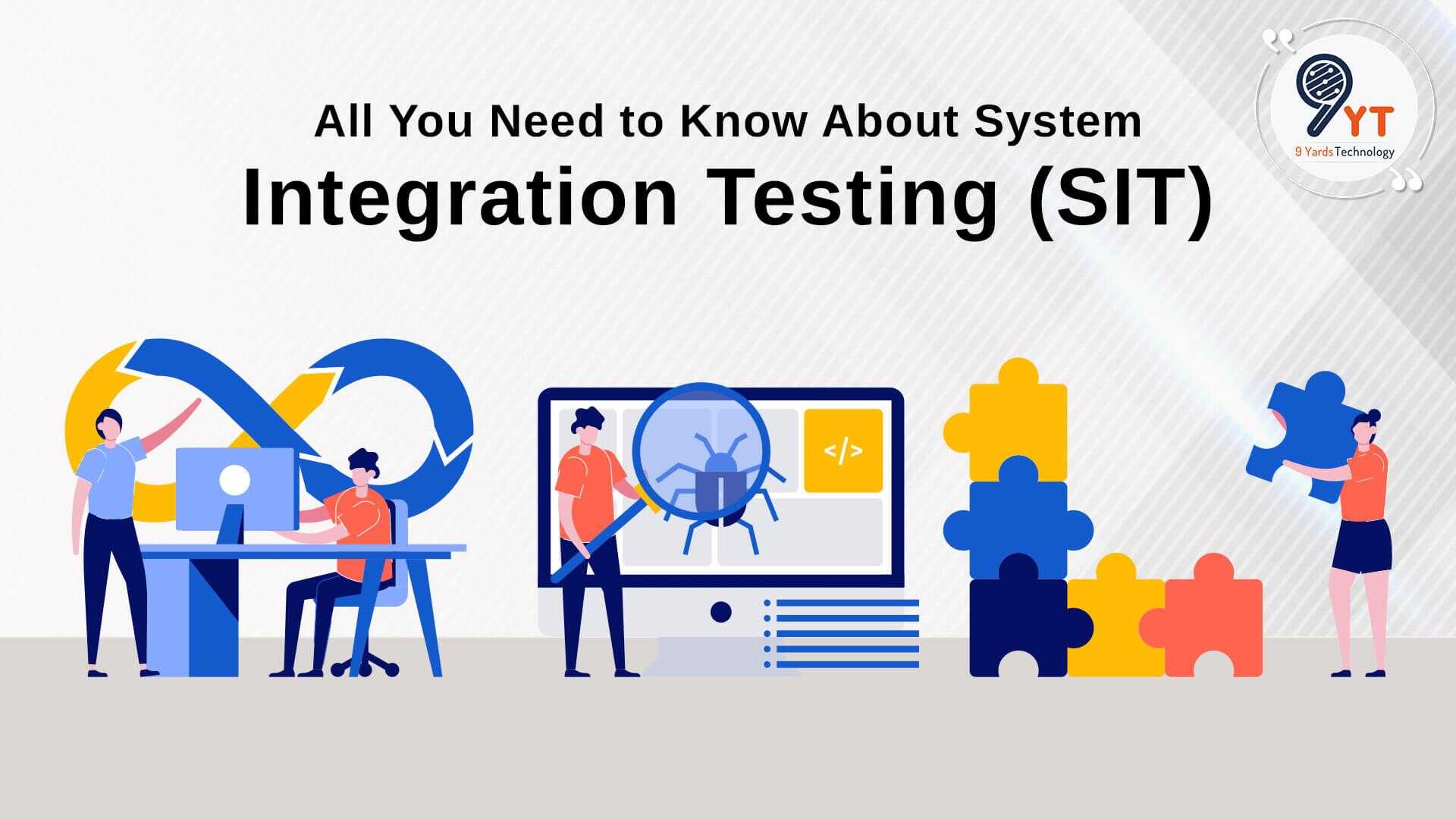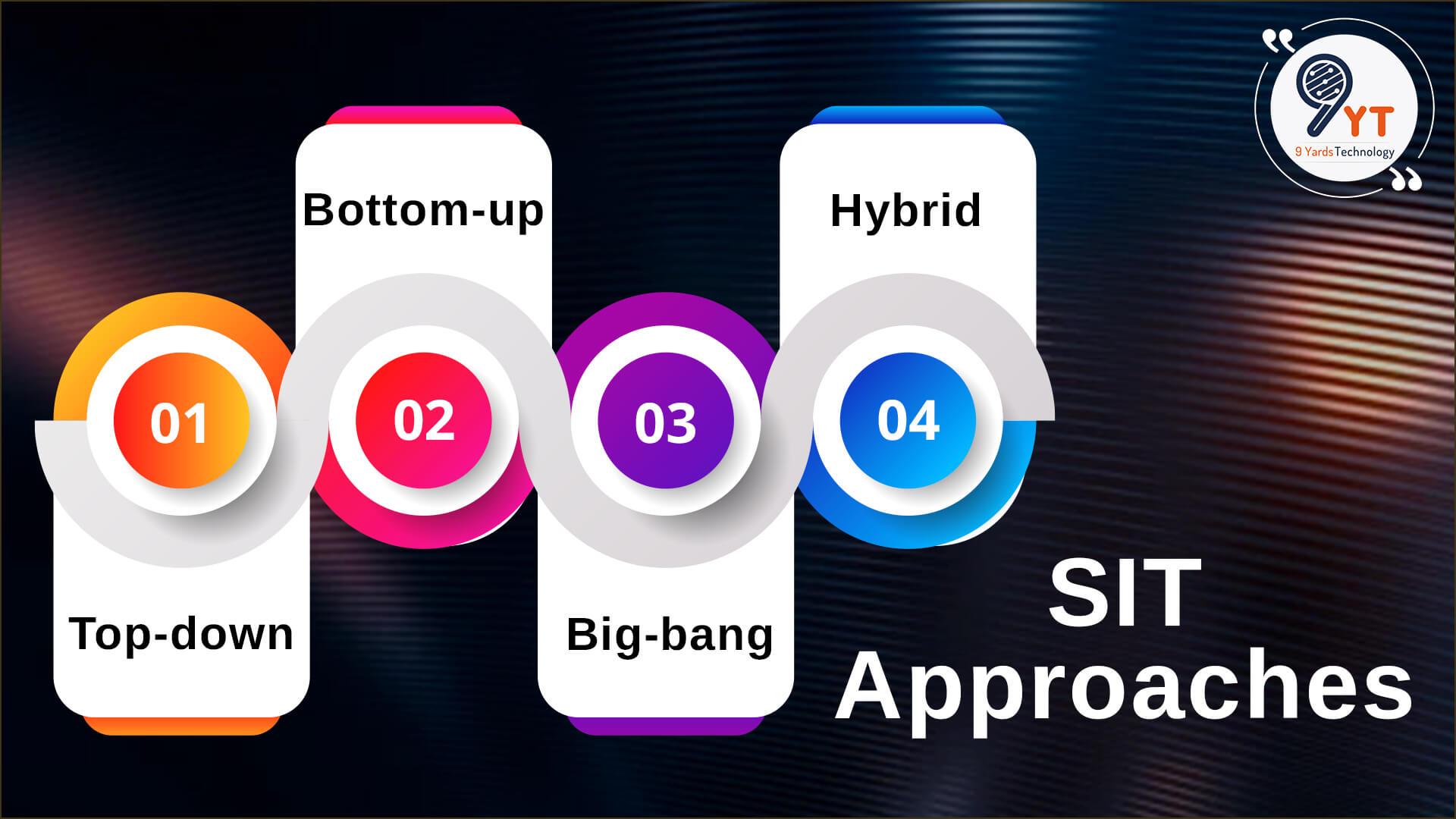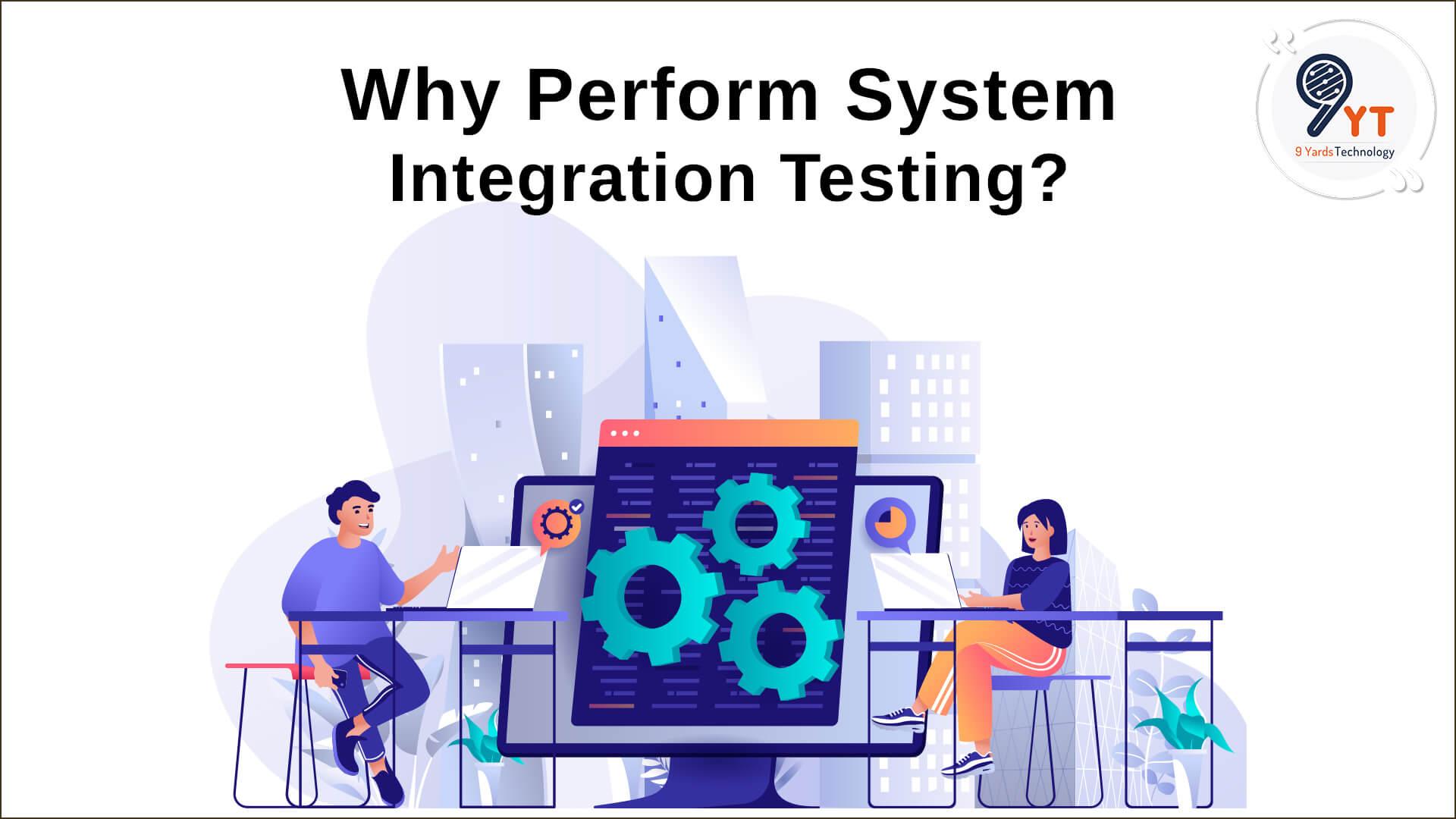
If you’ve ever developed software, you’ll understand how critical it is to thoroughly test everything before releasing it to the public. System integration testing is a crucial stage in this testing process. Essentially, SIT ensures that the various components of your system work in unison. System integration testing (SIT) is an essential phase in software development that ensures that all system components work as intended. SIT is a critical process for identifying and correcting errors and guaranteeing that the final product is high quality.
In this blog, we’ll cover everything you need to know about system integration testing, including what it is, how it works, and best practices for testing success.
According to a survey of software developers, 60% believe that system integration testing is critical to their work.
Furthermore, the system integration testing market is expected to grow from 10.9 billion US dollars in 2018 to 28.8 billion US dollars by 2023.
System Integration Testing (SIT): An Overview

System integration testing (SIT) ensures all of a system’s components integrate and work together as intended, with a primary goal of identifying and resolving issues that arise due to integration. It is the type of testing usually performed after unit testing and before user acceptance testing. It focuses on verifying that the integrated system meets the requirements and functions correctly.
SIT typically involves testing different modules’ interfaces, verifying data flows, and checking for proper performance and usability. It aims to detect and resolve any issues that may arise before releasing the system to end users. By conducting effective System Integration Testing, organizations can reduce the risk of unexpected system behaviour and improve the overall quality of their software products.
Why Perform System Integration Testing?

We hope now you have got an idea about the basics of system integration testing. Let’s elaborate on some factors highlighting why system integration is crucial for product quality and success.
Here are the reasons how
- It ensures the software tends to work seamlessly with different systems
- The requisite interaction and associations tend to work perfectly
- Transfer of necessary deliverables takes place after the validation of system integration testing.
- Ensuring the assembling of the system for the first time after the completion of tests.
It also involves independent testing of several segments of the system. Thus, system integration helps expose and correct errors before they get handed to the end users. Discovering troubles or problems in early phases saves a significant amount of time and effort since you don’t have to fix those problems in the later development phases. Hence, The development team validates and approves the system integration testing before releasing the minimum viable product (MVP).
Benefits of System Integration Testing
Now let’s dive into the benefits that system integration testing offers.

- Aggregating and streamlining all correlated data is one of the most apparent benefits of system integration. This simplifies data retrieval and processing across subsystems even more, as redundant processes waste employee time and effort. Internally, integration facilitates the tracking of IT issues.
- System integration testing can also assist in identifying and correcting bugs within the systems, as well as ensuring that the systems are performing as expected. It may include performance, integrity, and compatibility testing of the system.
- System integration testing can be essential for different objectives and both the manufacturing and development environments use it. Also, companies use it to guarantee systems are functioning correctly.
Shortcomings of System Integration Testing
Here are some shortcomings of System Integration Tests that you need to be aware of –
- Separately conducting unit tests of all modules in the system consumes a reasonable amount of time. And if it is a possibility, that subsystem fails even if its testing takes place separately since multiple issues arise when they interact.
- The testing process doesn’t finish until the incorporation and tests of all modules ranging from top to bottom levels.
We have now discussed the benefits and shortcomings of System Integration Testing. But it depends entirely on expertise and experience in handling different testing types.
How Does SIT Work?
System integration testing concerns testing the interfaces and dealings between different segments or subsystems of a system to guarantee that they work in tandem as intended. This testing phase is crucial because it assists in identifying and resolving any issues that may arise after integrating all the individual components into a single system. During system integration testing, analysts test the system as a whole rather than testing each element individually, as in unit testing.
The testing team is facilitated to discover potential concerns that may only arise when incorporating elements. System integration testing ensures that the system meets all its operational and performance requirements and prepares it for acceptance testing by the end user. Successful system integration testing is crucial to assuring the overall quality and reliability of the software system.
Requirements of SIT Tests!
Here is the list of requirements that can help you in creating an impeccable System Integration Test plan.
- Creating a test environment that perfectly matches the required specifications for the production conditions.
- Identification of scenarios that mandates test.
- Establishing a proper communication plan.
- Establishing a shared repository
- Involved all the needed stakeholders’
Organizations require creating a plan or test strategy around system integration tests. Thus you can encounter more organizations investing a lot of effort and time in revamping their test strategies and how they function.
Approaches For Executing System Integration Tests
There are four major approaches to system integration tests. Some of them are as follows:

Top-down Integration Testing
This approach focuses on combining the higher-level modules of the system first and then testing their interactions with lower-level modules. It helps to identify issues in the overall system architecture.
Bottom-up Integration Testing
This approach involves testing lower-level modules of the system first and progressively integrating them with higher-level modules to ensure all components work well together.
Big-bang Integration Testing
This approach integrates all system components simultaneously and then runs tests to determine if the system works as expected. It is an efficient approach but can be riskier as all aspects are tested together.
Hybrid Integration Testing
This approach combines the top-down and bottom-up approaches by creating subsystems of modules and integrating them. It focuses on testing the functionality and reliability of the subsystems before incorporating them into the larger system. This approach helps in identifying issues early on in the development process.
Best Practices for Successful SIT
There are some best practices to ensure your SIT process’s success. Make sure you define the scope of the testing so that it includes all of the system’s components. Use test automation to save time and ensure consistency. Creating test cases will help you cover all aspects of the system, and using accurate data during testing will ensure that the system behaves as it should in the real world. Finally, you should test for scalability to ensure that the system can handle an increase in load or performance requirements.

By following these best practices, you can be confident that your SIT process will be successful and that your final product will be of high quality. Here are a few suggestions for executing a successful SIT:
Define the Testing Context
Before beginning SIT, define the testing scope to ensure all system components are incorporated into the testing process.
Use Test Automation
Test automation can assist you in reducing time and resources while also ensuring consistent and thorough testing.
Create Test Cases
Create test cases to ensure that all aspects of the system are tested, and all requirements are met.
Use Real Data
Actual data should be used when testing to guarantee that the equipment performs as expected under real-world conditions.
Real-Life Scenarios: System Integration Tests
Now let’s peek into some of the real-life scenarios of system integration tests assuming that a new software application is being developed for a banking institution. The application needs to be integrated with the bank’s existing systems, such as the customer database, transaction processing system, and accounting software.
The system integration tests would verify that the new application can successfully communicate and exchange data with these systems and perform all the required banking transactions accurately and securely.
Additionally, the system integration tests would ensure that the new software does not disrupt the existing systems or cause any downtime for the bank’s operations.
This scenario highlights the importance of system integration tests in implementing new software that must function correctly with existing systems to avoid costly errors and downtime.
But in some scenarios, such tests can be challenging due to the complexity and scope of the project. Here we have mentioned three common challenges associated with the SIT.
Interoperability
System integration tests requisite the verification of how several systems interact with one another. It can be challenging to execute if several systems are concerned or use distinct technologies or protocols.
Data Integrity
System integration tests must guarantee that data is transferred accurately across systems and databases and that any modifications or alterations made to one system don’t impact the others. It mandates extensive testing to assure data integrity across all systems.
Scalability
As new segments and functionality are counted to a system, it must remain scalable so that performance doesn’t affect when more users access the system simultaneously. System integration testing must indicate that the system can persist in enhanced loads without compromising enactment or reliability.
Unavailability of Systems/Components
One of the significant challenges linked with this type of testing is the unavailability of third-party environments or segments. This can be due to varied grounds such as budget restrictions, lack of resources, and other reasons.
This challenge may be overwhelmed with service virtualization, which permits the QA teams to mimic the behaviour of external systems to test the applications without having access. It also helps diminish costs associated with testing by eradicating the demand for physical hardware and personnel resources.
With service virtualization, QA teams can create realistic simulations that mimic the behaviour of real-world environments and services to perform system integration tests. This makes it effortless for teams to run numerous tests simultaneously on distinct compositions and media and against various scenarios and requirements before they are released into production.
Parting Thoughts!
System integration testing (SIT) is the method of executing thorough testing on the application and the entire system. During SIT, QA’s test the entire system at once rather than each component individually by using various methods to ensure that the product works effectively. For example, testing the entire system’s functionality to ensure it works as it is intended to, followed by regression tests, the system makes alterations to ensure that changes don’t lead to any new issues. Lastly, conducting performance tests to ensure that the system handles the anticipated load and performance requirements.
Also, it generally comprises more than one shorter software and hardware unit. The initial purpose of performing system integration testing is to assure the functional facets of the software and hardware systems are synchronized. The SIT testing is perfect for outlining the blemishes and vulnerabilities in their early stages and helps execute earlier feedback on the acceptance of every module.
How Can 9YT Aid You?

For digital businesses that follow Agile and DevOps, it is advised to use system integration techniques so that the different systems work as intended. 9Yards Technology is a firm that has altered the process and methods of how organizations interact with their testing strategies. Hence, it embraces the quality assurance of different leading organizations growing rapidly.
Leveraging 9Yards Technology’s quality assurance services helps in improving existing business processes with existing QA processes by implementing strategies, best practices and so on, thus resulting in timely product to market, faster development, and quicker ROI.
Furthermore, if you are a growing business looking to redefine or reinvent testing requirements related to system integration, 9Yards Technology will be the best fit.






